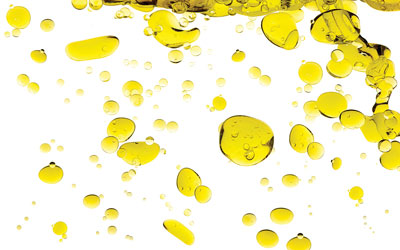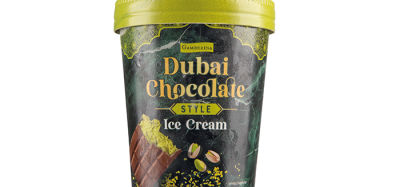Fat functionality in emulsified foods
- Like
- Digg
- Del
- Tumblr
- VKontakte
- Buffer
- Love This
- Odnoklassniki
- Meneame
- Blogger
- Amazon
- Yahoo Mail
- Gmail
- AOL
- Newsvine
- HackerNews
- Evernote
- MySpace
- Mail.ru
- Viadeo
- Line
- Comments
- Yummly
- SMS
- Viber
- Telegram
- Subscribe
- Skype
- Facebook Messenger
- Kakao
- LiveJournal
- Yammer
- Edgar
- Fintel
- Mix
- Instapaper
- Copy Link
Posted: 28 October 2015 | Geoff Talbot, The Fat Consultant | 2 comments
An emulsion is a fine dispersion of liquid droplets in another liquid continuous phase in which the droplets are immiscible or insoluble. In food terms, the two phases are generally oils and water. Food emulsions tend to take one of two forms – either oil in water (O/W), e.g. cream and mayonnaise, or water in oil (W/O), e.g. butter and spreads – although more complex duplex emulsions such as water in oil in water (W/O/W) and its opposite oil in water in oil (O/W/O) are also possible. In simplistic terms, water is water but oils can differ in their properties and functionality so what is the best oil to use for a specific food emulsion? In this article, the basic properties of fats that play a role in this choice will be described and how these are important in food emulsions will be discussed.


Functional characteristics of oils and fats
Oils and fats are triglycerides or triacylglycerols and are esters of glycerol with three fatty acid groups. Largely, it is the types of fatty acid and their positioning on the glycerol backbone that define the important functionalities of fats. In terms of fat functionality in emulsified food, three parameters are important:
- physical characteristics, particularly crystallisation and melting
- nutritional characteristics
- storage stability, particularly stability against oxidation and hydrolysis
Physical characteristics
The fatty acids in triglycerides differ in three main ways – their chain length (number of carbon atoms), the number of unsaturated double bonds in the carbon chain, and whether these double bonds are in the cis or trans configuration. Increasing chain length increases the melting point. Increasing the degree of unsaturation decreases the melting point. Changing cis double bonds into the corresponding trans double bond increases the melting point. These general effects in the fatty acids also carry through to the triglyceride such that a fat rich in longer chain saturates is solid at room temperature while one rich in cis-unsaturates is generally liquid at room temperature. One in which the cis double bonds have been converted to trans double bonds by partial hydrogenation is higher melting than the starting oil.
Different products will require different melting profiles. For example, fats used in fridge-spreadable margarines will need softer, lower-melting, more unsaturated oils than fats used in bakery margarines where a degree of solid fat is needed at the mixing temperature (typically, 20-25°C) to get the right texture in the end product. Most fats will need to melt below mouth temperature but it is possible, even desirable, for fats used in spray-dried emulsions such as soup creamers to have higher melting points.
Nutritional characteristics
Although all fats have approximately the same energy content, different fatty acids have different effects on blood cholesterol levels. Trans fatty acids lower the ‘good’ high-density lipoprotein (HDL) cholesterol and raise the ‘bad’ low-density lipoprotein (LDL) cholesterol1. This is the main reason why they have largely been removed from today’s foods. Saturated fatty acids raise both types but whereas once they too were demonised, recent research2 indicates that they are a more acceptable part of our diet because the increase in HDL cholesterol counterbalances the increase in LDL cholesterol. Cis-unsaturated fatty acids lower LDL cholesterol and raise HDL cholesterol so they are good on both counts, but, because they are also low melting and generally liquid they are not able to form the whole base of foods that need structure. There is often, therefore, a compromise to be made between nutritional requirements and physical functionality.
Storage stability
There are two main reactions that cause rancidity or the taste/odour degradation of fats. These are oxidation and hydrolysis, one involving oxygen as the main cause of degradation, the other involving water. Oxidative degradation is a problem with all fats, irrespective of whether they are in an emulsion or not. If they are in contact with air (even within packaging) they will, in time, begin to oxidise. There is generally an induction period during which very little oxidation occurs but then, once oxidation begins, it goes very quickly. Oxidation involves the formation of free radicals; during the initiation stage of oxidation a hydrogen free radical is removed from one of the fatty acid chains. Hydrogen atoms on the methylene group next to a carbon-carbon double bond are most susceptible to this.
This means that cis-monounsaturated fatty acids are more likely (10 times more likely) to oxidise than saturated fatty acids, and that cis-polyunsaturated fatty acids are 100-150 times more likely to oxidise because they have one or two methylene groups between two carbon-carbon double bonds. Degree of unsaturation therefore plays a big part in defining the oils to be used purely to try and minimise oxidative breakdown. One of the reasons there is an induction period during which no oxidation occurs is because any antioxidants present (and there are usually some tocopherols naturally present in the oil) preferentially react with the free radicals that are formed before they break down further. Indeed, it is the breakdown of products in this first stage of oxidation that cause the off-flavours. Firstly hydroperoxides are formed, which then break down further into aldehydes and ketones. It is these that give the rancidity to oxidised fats. Highly unsaturated oils such as sunflower, soybean, rapeseed, and particularly fish oils, are especially prone to oxidation unless protected in some way.
Hydrolysis is a different reaction. Hydrolysis occurs when both oil and water are present together, as they are in food emulsions, but the reaction generally needs a lipase enzyme to also be present to catalyse the reaction. During the reaction water attacks the ester bond between a fatty acid group and the glycerol backbone of a triglyceride breaking off a molecule of fatty acid and leaving a diglyceride. Further hydrolysis can remove more molecules of fatty acid reducing the diglyceride to a monoglyceride and eventually to glycerol. The main problem with hydrolysis arises when a fat rich in lauric acid (C12) such as palm kernel or coconut oil is in the fat phase of the emulsion. When free lauric acid is produced in this way it quickly becomes apparent as a soapy off-taste. The threshold level of lauric acid needed to taste this soapiness can be as little as 0.07%3. It is quite common for non-dairy analogues of emulsified dairy products to use fat phases rich in such lauric fats so it is important to be aware of this problem in defining the oil for such products.
Use of fats in emulsified products
Dairy analogues
Perhaps the most common form of processed food emulsion is one that matches one or other form of dairy product. This can be matching milk itself, cream (particularly in whipped toppings) and butter. Full-fat milk contains about 4% fat. Vegetable fat filled milks can be produced as alternatives. These are often used in small single-serve catering packs and are produced by homogenising skimmed milk and a vegetable oil. Early filled milks used coconut oil but, more recently, unsaturated vegetable oils have been used for nutritional reasons. These can also be produced in a powdered form by spray-drying. If the fat content is increased they can then be used in place of cream as powdered coffee whiteners. In this case an emulsion of vegetable fat, skimmed milk, sugars, emulsifiers and ingredients such as sodium caseinate is spray-dried to form a powder that can later be reconstituted. In such a process, high temperatures and an air flow are used so a high oxidative stability is required in the fat phase. After spray-drying, the powders are packed, often in large sacks that are then stacked and palletised. It is important, therefore, that the fat solidifies quickly to a reasonably high solid fat content to minimise the degree of aggregation that could then occur. The main fats used are palm kernel stearin or fully hydrogenated (i.e. trans-free) palm kernel oil for bulk whiteners, or coconut oil or palm oil and palm fractions for retail whiteners.
Dairy toppings are generally produced by whipping double cream. During this process the milk fat coalesces to form a continuous phase which can contain up to 50% incorporated air. The non-dairy alternatives are again made from vegetable fats, skimmed milk, sugar and emulsifiers. These can produce whipped toppings with a much greater stability than that achieved with double cream. Although the emulsifier plays a role in this the choice of fat is also important in giving a higher solid fat content and a greater crystalline area than can be achieved using milk fat. Coconut oil and palm kernel oil are often used. Campbell and Morley for example, describe a non-dairy topping based on 22.5% coconut oil, 22.5% palm kernel oil, 1% sodium caseinate and 3% buttermilk powder4. To move away from lauric-rich fats such as these with their potential attendant problems of hydrolytic soapy rancidity, the types of fats often used in cocoa butter equivalents have also been used in non-dairy toppings. The types of fats often used in this whole set of non-dairy analogues are summarised in Table 1 (page 00).
Margarines and spreads
In many ways these are also non-dairy analogues of butter and, like butter, are water-in-oil emulsions. Margarine typically contains about 80% total fat; spreads have lower levels of fat, typically 60% or 40%. The fat phase is often a blend of a liquid unsaturated oil combined with a lower amount of a high-melting, solid fat, often called a hardstock. The hardstock structures the fat phase of the emulsion giving the correct combination of hardness and spreadability. The melting profile of the fat phase is chosen so that the level of solid fat between 5°C and 20°C is such that the margarine is spreadable without becoming too soft and liquid. The hardstock needs to crystallise quickly once the emulsion is produced so that it sets sufficiently quickly in a tub to allow rapid sealing and packing. It also needs to hold the structure of the crystallised emulsion to minimise any leakage of water from the emulsion. Historically, hardstocks were produced by partial hydrogenation of oils leading to trans fatty acid formation. Now, though, these have almost all been phased out and replaced by either non-hydrogenated hardstocks (such as palm stearin or more exotic tropical oils like pentadesma and allanblackia5 or fully hydrogenated hardstocks (such as an interesterified blend of fully hydrogenated palm and palm kernel oils6. The choice of unsaturated liquid oil in the spread is often dictated by nutritional and marketing needs, e.g. sunflower oil for a polyunsaturated spread, olive or rapeseed oil for a monounsaturated spread.
Summary
The use of emulsions is widespread in foods and so only a small selection of emulsified products could be considered here. These were chosen, though, to demonstrate how the factors considered above (physical characteristics, nutritional characteristics and storage stability) are important in defining the correct choice of oil for these products. They are, therefore, only examples of how important these functionalities are in oil choice.
References
- Mensink RP, Zock PL, Kester ADM, Katan MB, (2003). ‘Effects of dietary fatty acids and carbohydrates on the ratio of serum total to HDL cholesterol and on serum lipids and apolipoproteins: a meta-analysis of 60 controlled trials’. Am. J. Clin Nutr. 77, 1146-1155
- Siri-Tarino PW, Sun Q, Hu FB, Krauss RM (2010). ‘Saturated fat, carbohydrate and cardiovascular disease’. Am. J. Clin. Nutr. 91, 502-509
- Talbot G (2011). ‘The stability and shelf life of fats and oils’ in ‘Food and beverage stability and shelf life’. ed. Kilcast D and Subramaniam P. Woodhead Publishing, Cambridge.
- Campbell IJ, Morley WG (1992). ‘Non-dairy creams and process of making’. US Patent 5135768
- Arellano M, Norton IT, Smith P (2015). ‘Specialty oils and fats in margarines and low-fat spreads’ in ‘Specialty Oils and Fats in Food and Nutrition’. ed. Talbot G. Woodhead Publishing, Cambridge.
- van Duijn G, Dumelin EE, Trautwein EA (2006). ‘Virtually trans free oils and modified fats’ in ‘Improving the fat content of foods. ed. Williams C, Buttriss J. Woodhead Publishing, Cambridge
About the author
Geoff Talbot (also known as The Fat Consultant) has spent 47 years in the food industry, mainly with Unilever and Loders Croklaan before branching out into consultancy in 2003. He runs training courses, tailored to the specific needs of a client, on all aspects of oils and fats technology and use in foods. He also carries out literature reviews to clients’ requirements on oils and fats technology and applications. He writes and lectures widely and has written and edited books on confectionery, on saturated fat reduction and on specialty fats and oils.









I would like to reach out to the author. Is there a way you help with this?
Very interesting
Thanks
Regards
Rafiq